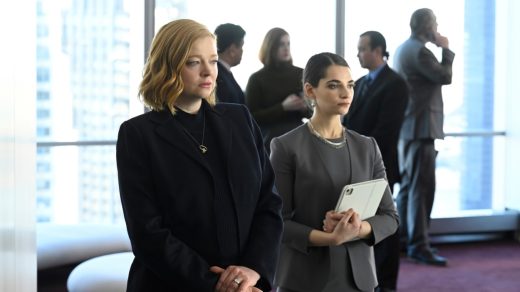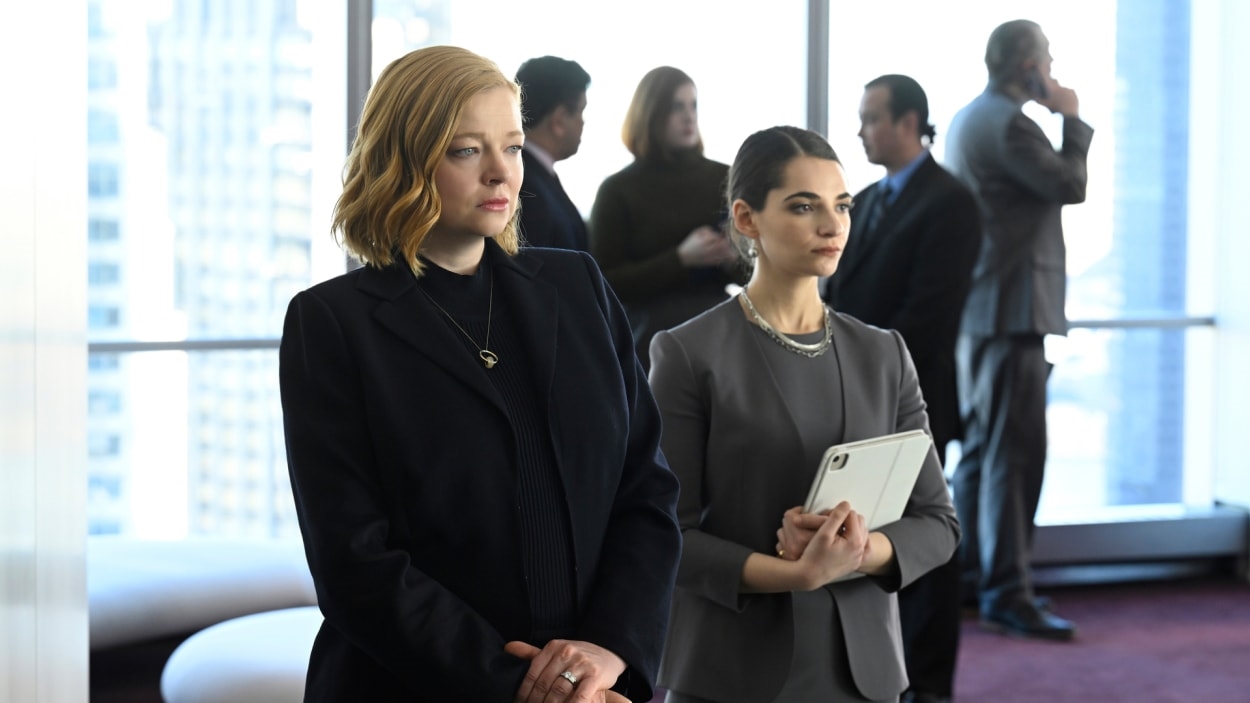How the sound design of ‘Succession’ amplified the show’s best elements
By Delia Casadei—The Conversation
HBO’s Succession delivered its grand finale on May 28, 2023—the climax of four award-packed seasons of searing put-downs, nihilistic humor, and desperate power plays.
The show tells the story of ailing media tycoon Logan Roy and his four horrid children who aim to inherit his empire. I loved it because it rendered despicable people in power as human—funny, pathetic, capable of deep feeling—without once trying to redeem them.
But as a music historian, I will miss the series’ use of music and sound the most.
As many critics have noticed, one of the series’ best elements is its soundtrack, which is as complex and propulsive as the drama it accompanies.
To me, the show’s clever sound design, combined with composer Nicholas Britell’s gleefully dark score, reflects a level of emotional sophistication that is unrivaled on television.
Corrupting classical music
Most contemporary political dramas are about corruption, and music is great at progressively turning something seemingly wholesome into something sour.
Traditionally, this is done by adding chromaticism—the black keys of the piano keyboard—into the chords and melody, which produces a sense of darkening and dissonance. But these days, anything sounding weird—an off-beat rhythm, an unexpected sound—can do the trick. It is the composer’s skill in layering the strangeness into the music that makes the difference.
Britell has described being inspired by European late 18th century music. And the theme of Succession does draw from a couple of unmemorable bars from Beethoven’s Pathétique Sonata, slowed down and with a few changed notes.
However, I’d say the theme song’s sound world is closer to the opening dance of Sergei Prokofiev’s 1935 ballet Romeo and Juliet or Sergei Rachmaninov’s famous 1892 piano prelude in C Sharp minor: big romantic pieces that swing between bass notes and thick block chords like the batter of a church bell.
But Britell then adds details that work in outlandish tension with the romantic musical language he’s adopted.
For example, the piano that plays the theme song is audibly out of tune. That’s no accident. Meanwhile, the melody, which is in a high register, awkwardly tries, but ultimately fails, to squirm its way to a brighter key. Throughout the show, there are a lot of reality-show-style pans to the faces of characters saying things like, “I am excited.” This is their music.
The rhythm is littered by small dissonant accents in the upper register of the piano that sound like a fun-house version of the “low battery” sound on a cellphone. The effect is alarming—and oddly befitting of the topic of a corrupt media conglomerate.
Lastly, Britell is a hip-hop beat maker and layers the theme song with a cheesy 1990s synthesizer beat. This adds bounce, and a smirk, to the romantic broodiness of the chords and melody.
In his very 21st century way, Britell festoons earnest romantic music with details that gleefully desecrate it, bringing viewers right into the psychological dynamics of the show’s protagonists: a hunger for power, accompanied by levels of self-loathing that vacillate between comedy and tragedy.
Brood too much and the effect is lost
For comparison, House of Cards, which follows a crooked politician’s quest for the U.S. presidency; and Yellowstone, which tells the story of a Montana landowning family’s mission to ward off developers, Indigenous leaders, and environmental activists, also attempt to convey a grim mood and crookedness in their music.
Both shows have rightly garnered attention and praise. Yet they, unlike Succession, have, in my view, underwhelming scores.
Their theme songs are symphonic, which befits the grandeur of the topic and obscene privilege of the characters; tunes are carried in the deeper, lower range, rather than the more customary bright, high register. Both theme songs make heavy use of the lower strings of violas, cellos, and double basses, which further darken the sonic palette.
The composers also make an effort to signal corruption through momentarily dissonant chords or notes. At the end of the opening credits of House of Cards, you can hear it in the twang of the electric guitar. And in Yellowstone, Tyler uses chromaticism to decorate the melody.
These tricks, however, don’t quite land.
In order for the stain of corruption to stand out, musically and otherwise, it has to operate against a relatively clean background. The scores for both House of Cards and Yellowstone are already dark and twisty to begin with, which makes the “staining” effect harder to pull off.
This is where Britell’s astute ways of combining brightness and darkness in Succession’s music make all the difference.
Hearing what the characters hear
The unusual sound design in Succession also unveiled the series’ psychological complexity.
Sound design indicates the ways in which all sounds, from noises to dialogue and music, are mixed into the soundtrack.
In the pilot episode, viewers meet Kendall Roy, an eminently slappable finance bro and heir apparent to his father’s company. He’s being chauffeured to a business meeting, and he’s bouncing in the back seat to the Beastie Boys’ “An Open Letter to New York.”
It’s utterly cringeworthy: a wealthy white dude using hip-hop as emotional fluffing.
The Beastie Boys, as Britell and the showrunners must know, have been criticized for being white Jewish musicians parading as white working-class boys aping, in turn, Black hip-hop artists. At first the Beastie Boys blare out on the soundtrack; seconds later, their music disappears into Kendall’s headphones, and viewers hear his whiny voice rapping the lyrics.
Suddenly, we suspect he might hate himself more than we already do.
Film scholar Claudia Gorbman first theorized the effect toyed with here by Succession’s award-winning sound designers, Nicholas Renbeck and Andy Kris. Gorbman highlights the distinction between “diegetic music”—music playing in the background, say, at a party, or ambient sounds, like cutlery and crockery—that can be heard by the characters in the film, and “non-diegetic music,” which is music heard only by the film’s audience and not by the characters.
The balance between these two kinds of music and sounds creates the psychological setup for the story: Diegetic implies that the characters’ world is not quite the audience’s own. Non-diegetic, on the other hand, implies that the filmmakers are conveying the characters’ emotions to the audience, like when the music comes in as two romantic leads share a kiss.
The switch from non-diegetic to diegetic in Kendall’s entrance gives viewers a sense that they are spying on his fragile self-delusion. He is slippery, tweaky, unknown—even to himself.
Haunted by water
Britell’s music, and the show’s use of diegetic and non-diegetic sound, may be one of the reasons why, even four seasons in, none of the show’s fans could confidently anticipate who would succeed the family’s patriarch.
The series that begins with Kendall fittingly ends with him, too, as he walks, in a daze, along the Hudson River. The non-diegetic theme song plays in the background one last time. Then, for a brief moment—before a hard cut to a black screen—the sound goes diegetic: Viewers hear, with Kendall, the sound of the river flowing.
It’s a shocking moment. The show’s sound designers deliberately avoided ambient noises so as to show how the Roy siblings are too privileged and too busy scheming to notice their surroundings.
The moment Kendall hears the Hudson, everyone understands—first by ear, then by sight—that this story is over.
Delia Casadei is an assistant professor of music at the University of California, Berkeley.
This article is republished from The Conversation under a Creative Commons license. Read the original article.
(28)



